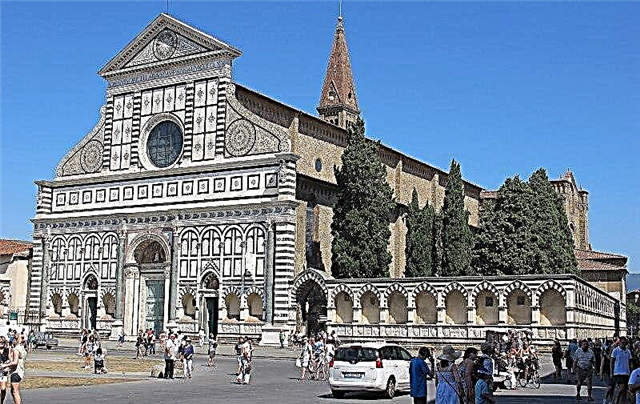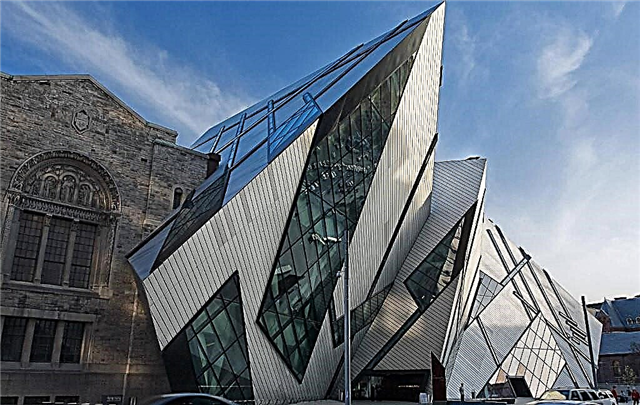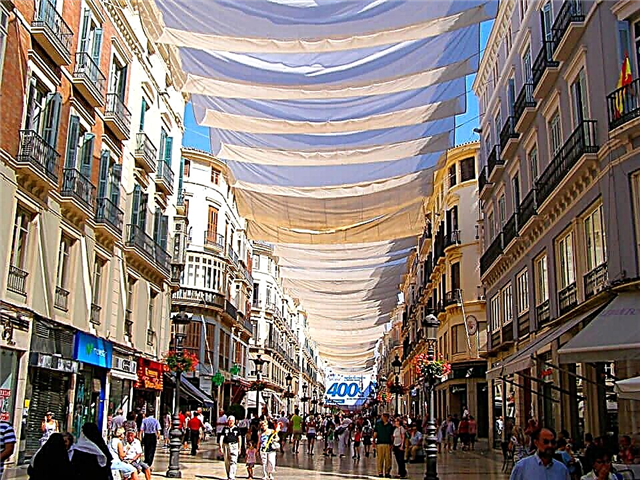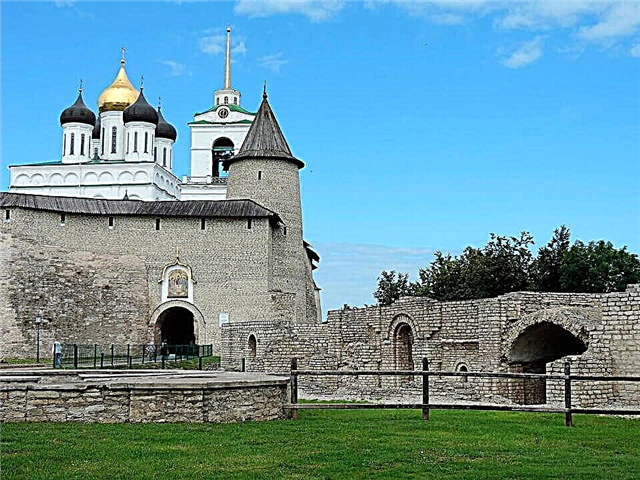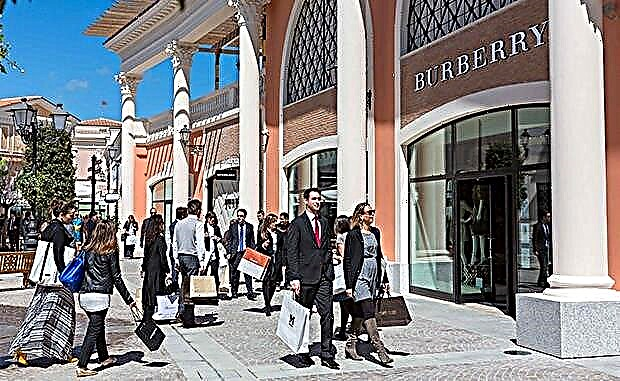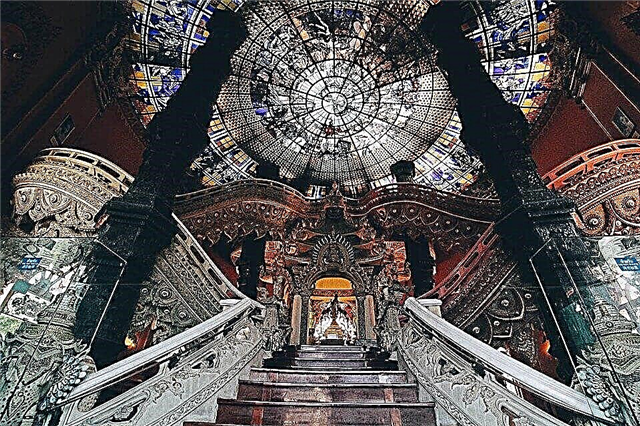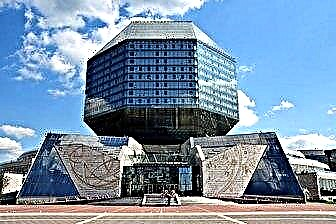For the first time Minsk is mentioned in the "Tale of Bygone Years" of the XI century. Over the long centuries of its existence, he managed to visit both a brilliant capital and an ordinary provincial town. The architecture of the Belarusian capital is a whimsical interweaving of styles and eras. Streets and squares are decorated with baroque Catholic cathedrals and traditional Orthodox churches, medieval houses with tiled roofs are mixed with modern museums.
Tourist trips to Minsk are gaining more and more popularity. The Belarusian capital offers not only interesting excursion routes, but also excellent cuisine and a varied entertainment program for quite adequate money. There is no bustle and noisy capital in Minsk, but there are green parks, picturesque alleys and hospitable residents.

The best hotels and hotels at affordable prices.
from 500 rubles / day
What to see and where to go in Minsk?
The most interesting and beautiful places for walking. Photos and a short description.
Upper town
The historical center of the Belarusian capital, which has preserved in its appearance the features of the 12th century. Since the 16th century, the Minsk nobility began to settle in the Upper Town. The architectural monuments of this area demonstrate a mixture of styles: from classicism and baroque to modern and eclecticism. Since the 16th century, churches, monasteries and houses of worship of various denominations have been erected on the squares and streets of the Upper City.

Trinity Suburb
An architectural complex located on the site of a 10th century monastery. Until the 19th century, the territory was occupied by the city market, then stone mansions were built in its place and a park was laid out. Nowadays, the buildings are used as museums, exhibition galleries, cafes and souvenir shops; one of the houses houses an opera house. The appearance of the Trinity Suburb is almost completely preserved in its original form.

Minsk City Hall
An architectural monument-remake built in 2004. The new town hall is a copy of a 17th century building. It was blown up by order of Niklai I in the middle of the 19th century after the abolition of the Magdeburg city law on the territory of Minsk (this set of laws endowed local authorities with broad powers and made them sufficiently independent in their policies). The idea to restore the town hall appeared in the 70-80s. XX century.

Independence Square
The largest square in Minsk, surrounded by famous sights. Construction began in the 30s. XX century according to the plan of the architect I. Langbard. Until 1991, the square was named after V.I. Lenin, then after the collapse of the USSR, it was renamed. This place is popular with the townspeople and guests of Minsk; here they like to make appointments and dates by the musical fountain.

Square of victory
The majestic wide square, designed and built in the first half of the 20th century, was originally called the Round Square. The architectural dominant of the area is the Victory Monument made of gray granite, erected in memory of the Great Patriotic War of 1941-1945. It is decorated with high reliefs glorifying the feat of Soviet soldiers. The Eternal Fire burns near the monument.

National Library of Belarus
A modern multifunctional center located in a building with an unusual architecture. The first library building was built in 1926. In the late 80s. XX century, it was decided to rebuild and modernize the premises. The project of M. Vinogradov and V. Kramarenko won the all-Union competition, but the work began only 13 years later and ended in 2006. The new building of the Library resembles a cut diamond in shape, which symbolizes the knowledge of the world and the value of teaching.

Pishchalovsky castle
Historical and architectural monument of the early 19th century, erected by Kazimir Khrschanovich. The customer was the landowner R. Pischallo. The main predominant style of the building is pseudo-Gothic, which makes the castle look like a medieval fortress. Here was located one of the most reliable prisons in Europe, where revolutionaries, rebels and other dissatisfied with the government were kept.

Government House of the Republic of Belarus
The complex is located on the Independence Square. The Belarusian parliament and the cabinet of ministers sit inside. The Government House was erected in 1934 on the site of an area with low-rise wooden buildings. The building was built in the typical for that time manner of "Soviet gigantomania", during the 30s. it was the tallest building in Minsk. The interior is decorated with a rare five-ton star-shaped chandelier.

Palace of the Republic
A building on the territory of which solemn state events are held in honor of the Independence Day of Belarus and the Day of Victory in the Second World War. Also, a New Year tree is held here every year, pop stars perform, festivals, press conferences and business meetings are organized. In front of the palace there is a monument "Kilometer Zero of Belarus" in the form of a granite pyramid, from where the distance of all roads of the country begins.

"Gates of Minsk"
An architectural complex in the style of the solemn "Stalinist Empire", consisting of two symmetrical 11-storey towers. The attraction is located at the Railway Station Square. The towers are decorated with a large dial of a German clock, the coat of arms of the USSR and sculptures of a soldier, collective farmer, worker and engineer. The "Gate of Minsk" is a recognizable symbol of the city, the successor to the wooden Star Gate of the old Zamchishche district.

Bolshoi Opera and Ballet Theater
The main and only opera stage in the Republic of Belarus. The building was built in the 30s. XX century designed by G. Lavrov and I. Langbard in the architectural style of Soviet constructivism. The building is listed as a monument of national importance due to its cultural value. The theater has a children's music studio and a collective "Belarusian Capella".

Yanka Kupala Theater
One of the oldest Belarusian theaters. He opened the doors to the public in 1920. The stage was located in the premises of the Minsk Provincial Theater, built with civil donations at the end of the 19th century. In 1944 he was named after the Belarusian literary classic and poet Yanka Kupala. Near the theater there is a landscape Alexandrovsky square of the 19th century, decorated with the sculptural group "Boy with a Swan".

National Museum of Art
The museum is considered one of the largest galleries in Eastern Europe. Twenty museum collections contain over 27 thousand works of Belarusian and world art. The museum exhibits paintings, sculptures, graphic images, icons, textile panels, ornaments. Belarusian art is represented by a collection of more than 11 thousand exhibits. The museum has several branches - in Mogilev, Minsk and Raubichi.

National History Museum
The exposition is located in the premises of one of the branches of the State Bank of Russia, built at the beginning of the 20th century. The collection was created at the initiative of the Minsk Society of Natural Science Lovers. Initially, the museum had five sections: ethnographic, historical, archaeological, natural science, and artistic. During the Second World War, the collections were badly damaged, so the museum funds had to be formed from the very beginning.

Museum of the History of the Great Patriotic War
Museum, where exhibits of the war period 1941-45 are stored and exhibited. The museum staff conducts active educational and patriotic activities: organizes mass thematic events, initiates scientific research, gives press conferences in the media. Fascinating excursions are organized for visitors, during which you can learn the nuances of the history of the Great Patriotic War.

House-Museum of the 1st Congress of the RSDLP
A small wooden building on Zakharyevskaya Street, where the first congress of members of the Social Democratic Party (future Bolsheviks) took place in March 1898. Already in 1923, a memorial museum was opened here, but the building was destroyed during the Second World War. By Stalin's decree, it was restored in 1948. The funds contain documents, newspaper issues, party materials. Inside, the atmosphere of the end of the 19th century has been recreated.

Cathedral of the Blessed Virgin Mary
Catholic cathedral of the beginning of the 18th century, which was erected at the Jesuit monastery. The temple was visited by famous historical figures: Peter I, King of Sweden Karl XII, Hetman Mazepa, Nicholas II and others. The building was damaged during the Second World War, in the 50s. its appearance was greatly changed and adapted for a physical culture society. The cathedral was restored by 2000, now it is the main Catholic church in Minsk.

Cathedral of the Descent of the Holy Spirit
The main temple of the Orthodox Church of Belarus. Initially, it housed the Monastery of Cosmas and Demyan, but in the 17th century the building was transferred to the Catholic Church and the Bernardine Order was housed in it. The cathedral returned to Orthodox believers only in the 19th century. In 1870, a monastery was opened at the temple. After the Revolution of 1917, church services were discontinued, but since 1942 the temple started working again and was never closed again.

Red Church
The official name of the temple is the Church of St. Simeon and St. Helena. This is a picturesque Catholic church in the center of Minsk, built of red brick. It was erected at the beginning of the 20th century at the expense of the aristocrat Edward Voinilovich, whose children Simon and Alena died at a fairly early age. To perpetuate the memory of his beloved offspring, the nobleman decided to build a church and donated an impressive sum of money for this purpose.

Cathedral of the Holy Apostles Peter and Paul
The oldest temple in the Belarusian capital, a valuable historical and architectural monument of the early 17th century. In the 18th century, the Russian Empress Catherine allocated funds for the restoration, so the cathedral was renamed in her honor. In 1991 the original name was returned to the cathedral. The inner walls of the building are painted with magnificent frescoes. The church contains an icon of the Three Vilna Martyrs with the relics of the saints.

Bernardine monastery
A monastery that belonged to one of the branches of the Franciscan Order, which is known in Belarus as the Bernardine Order. At the beginning of the 17th century, the Catholic brothers were content with a modest wooden church, but a fire in 1644 destroyed all buildings. The stone church and monastery were erected within a few years. In the middle of the 19th century, these lands, along with their property, were confiscated from the Bernardines, and later the monastery was given to the Orthodox Church.

Island of Tears (Island of Courage and Sorrow)
Memorial complex in the bend of the Sviloch River opposite the Trinity Suburb. It was created in honor of the memory of the soldiers who died during the military conflict in Afghanistan in 1979-1989. The complex is an artificial island connected to the coast by an arched bridge. A memorial chapel is located in the center of the Island of Tears. On its walls are the names of all Belarusians who died in Afghanistan.

Chelyuskintsev Park
City park for walking and recreation with attractions, playgrounds and recreational areas. The territory also has a dance floor, a summer stage and specially equipped places for intellectual games. The park appeared in the 30s. XX century, in 1974 a large-scale reconstruction and replacement of old attractions was carried out. Later reconstructions were carried out in the 2000s.

Central children's park named after Maxim Gorky
One of the most beautiful and oldest public parks in Minsk. It is believed to have been founded in 1805. At first it was the governor's garden, which was intended for the rest of the noble public. At the end of the 19th century, sports became fashionable, and tennis courts, croquet lawns, and a stadium appeared in the park. After the Revolution of 1917, all estates gained access to the territory. Today the park has been converted to entertain children of all ages.

Loshitsa park
Park complex of the XVIII-XIX centuries with an area of more than 100 hectares. This is a great place for quiet walks and relaxation away from noisy streets. In summer, cycling is possible in the park, and in winter there are ski slopes on site. The first evidence of Loshitsa appeared already in the 16th century. According to the legend, the ghost of Yadwiga Lyubanskaya, the wife of the owner of the Loshitsa estate, Eustathius Lyubansky, is wandering around the park. The girl drowned herself in the river because of guilt for cheating on her husband.

Boulder museum
Open-air natural museum in a former river bed. The territory has the status of a natural monument. Here, on the lawns among the paths, there are more than two thousand boulders of various sizes and shapes. Most of the Museum of Boulders is occupied by the exposition "Map of Belarus", made up of natural materials. Stone millstones with ancient Slavic runes were found in the park.

Minsk Zoo
The zoo was opened in 1984 and continues to develop and expand in our time. At first it was a small zoo at the Minsk Automobile Plant, in 1997 the zoo was transferred to state funding. There is a dolphinarium, a monkey house and a lion's castle on the territory. The number of animals is constantly growing, new modern enclosures are being built for them. The Minsk Zoo is actively involved in animal protection activities.

Khatyn
The famous memorial complex, erected on the site of a burnt village during the Second World War. The composition perpetuates the memory of all people who suffered, were killed and maimed by the German invaders. Visitors are greeted by the figure of a man with a dead son in his arms. This is Joseph Kaminsky - the only adult survivor after the fire in Khatyn. All monuments on the territory of Khatyn are made of gray granite, which symbolizes the ash from the fires.

Dudutki
Ethnographic Museum of Folk Crafts near Minsk. On the territory there is an old mill, a pottery workshop and a smithy, a poultry yard, a bakery and a brewery, a zoo and a stable. In a cafe with national cuisine, visitors can taste Belarusian dishes. There is a hotel in the Dudutki complex where those who wish can stay for a few days.

Mir Castle
Defensive fortress of the 16th century in the city of Mir, a popular attraction and a UNESCO heritage site. The complex is located 100 km. from Minsk. The building is a unique example of "Belarusian Gothic", it is the easternmost building of the original Gothic architecture in all of Europe. The castle has survived several sieges and restorations; it has practically retained its original appearance.



